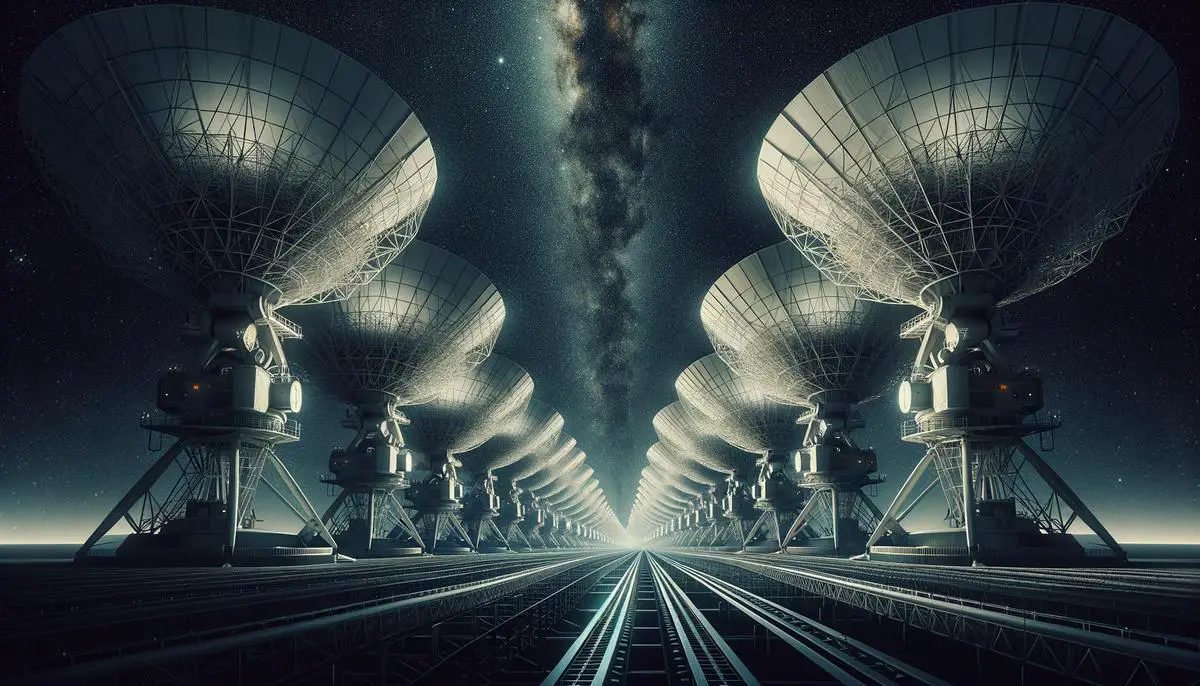Monoliths and interstellar messages in science fiction narratives offer a window into the collective human psyche, reflecting our intrinsic desire to connect with the cosmos. These elements, more than mere plot devices, serve as conduits for examining the broader implications of our quest for cosmic companionship. Through these narratives, we are invited to consider not just the technological marvels that might facilitate such communication, but the profound emotional and societal impacts of reaching out into the vast unknown.
The Role of Monoliths in Sci-Fi Narratives
Monoliths in science fiction serve as bridges connecting humanity with the vast unknown of the cosmos. '2001: A Space Odyssey' showcases these artifacts as harbingers of change, setting off a series of transformative events for humankind. They are present, imposing yet silent, challenging our protagonists and humanity itself to push beyond current understandings and limitations.
The enigmatic nature of monoliths fuels an innate curiosity in humans, sparking a relentless pursuit to decipher their origins and purpose. These artifacts, often depicted as impenetrable and featureless, become focal points for exploring themes of communication and connection across the infinite expanse of space. In '2001: A Space Odyssey', the monoliths are essentially timeless, transcending the constraints of known physics and technology. Their very existence points toward an intelligence vastly superior to our own, presenting a sobering perspective on human achievements and knowledge.
Monoliths challenge conventional means of communication. Instead of radio waves or coded signals, these objects convey their messages through direct interaction with their environment and the beings that encounter them. The moment human beings touch the lunar monolith or simply stand in its presence, they're thrust into a dialogue with the cosmos that is beyond words or even visual representations.
The transformative effect of monoliths on those who encounter them underscores the power of knowledge and understanding as a universal message. In '2001', the monolith's appearance on Earth signals the dawn of human consciousness while its counterpart on the moon triggers humanity's leap into deep space exploration. These are not just messages in the traditional sense but actions that push humankind to evolve.
Speculating on the origin and creators of these monoliths opens endless questions about the nature of the universe and our place within it. Are the creators benevolent or indifferent? Do they watch over us, or are we just participants in an experiment? The silence of the monoliths offers no answers, leaving humanity to confront its significance in the vast cosmic ocean.
Monoliths symbolize humanity's lifelong quest for answers about existence and our relentless drive to explore. They are mirrors reflecting our ambitions, fears, and infinite potential. In science fiction, such artifacts remind us that while we strive to send messages into the void, hoping to find others in the cosmos, we might also be on the receiving end of an interstellar dialogue that began before humankind ever looked up at the stars with wonder.
Monoliths in science fiction, especially in '2001: A Space Odyssey', transcend their role as mere objects. They become catalysts for exploration, both outward into the universe and inward into the essence of what it means to be human. Through them, we grasp the possibility that communication across the cosmos might not involve signals or languages as we understand them, but experiences that reshape our understanding of reality itself.
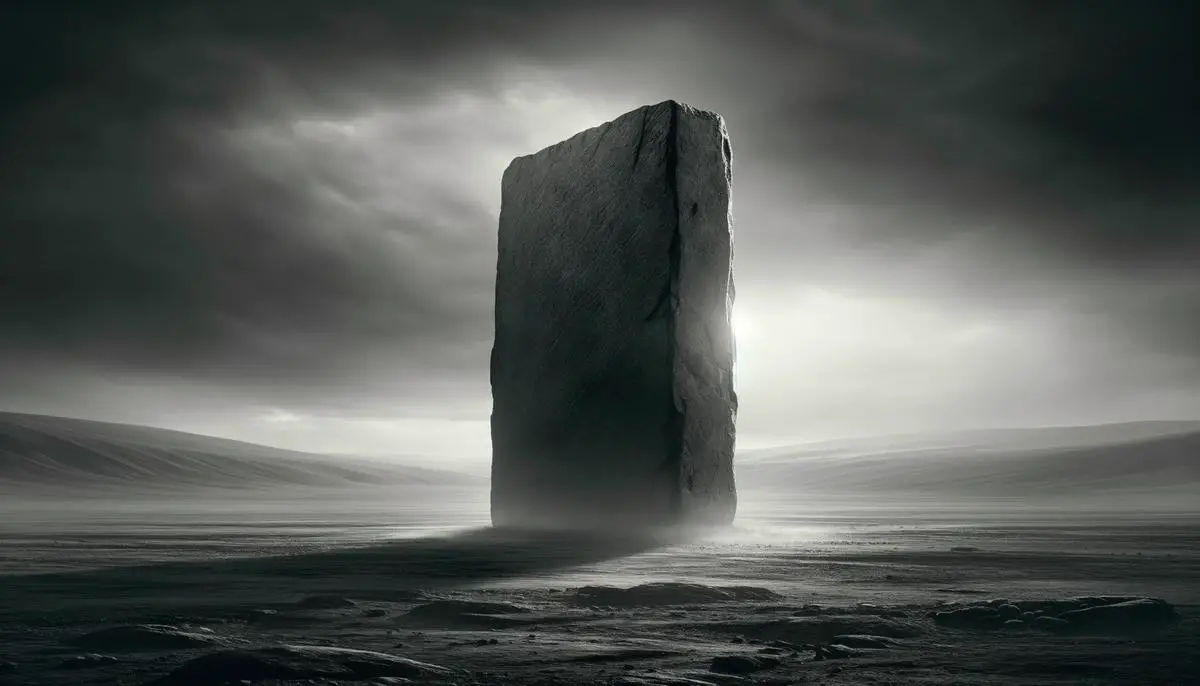
Interstellar Messages and Cosmic Loneliness
Interstellar messages in science fiction often serve as a beacon of our collective yearning, illuminating the dark void with questions of our place within the vast cosmos. 'Contact' and 'Interstellar' paint emotional landscapes imbued with hopefulness, underscored by a profound sense of solitude that humanity experiences when gazing up at the star-studded sky. This duality of hope and solitude poignantly encapsulates our complex feelings towards the universe — an entity so majestic yet apathetic to our existence.
'Contact', with its intriguing premise, delves into the euphoria and upheaval brought about by receiving an interstellar transmission. The storyline unravels not just the excitement of potential contact with extraterrestrial intelligence but also teases out the philosophical, ethical, and existential questions such engagements entail. It's as if the message from the cosmos acts as a mirror, reflecting our deepest insecurities and aspirations back at us. This dynamic elicits a realization of our negligible existence in the grand cosmic timeline, invoking feelings of cosmic loneliness.
'Interstellar' explores the lengths to which humanity could go to find a connection in the cosmos or to ensure its survival. The idea of sending messages through wormholes — bending time and space — serves less as a scientific endeavor and more as an ode to humanity's refusal to succumb to cosmic indifference. The portrayal of characters fussing over quantum data and traversing galaxies underscores a deep-seated desire to leave an indelible mark on the universe, a defiance against being forgotten in the vast emptiness.
These interstellar messages often carry with them a multitude of human experiences, emotions, and knowledge, encapsulating our existence in bits and bytes or scratches on golden records1. It's a testament to our longing to be understood and to understand, to reach out across the inky divides and find someone or something reaching back. This aspect mirrors our innate social nature, seeking connections not just among each other but extending this desire to the stars above.
The journey to decode or send these celestial messages frequently serves as a crucible, forging bonds among characters and catalyzing personal growth. It suggests that perhaps, in the grand scheme, it's not the answers from the cosmos but the questions we ask and the journey they spur that truly define us. It's an eloquent commentary on how our celestial inquiries, anchored by feelings of isolation in an infinite universe, fundamentally drive us towards unity and introspection.
The representation of interstellar messages in science fiction vividly captures humanity's oscillation between hope and cosmic loneliness — a paradoxical duality. These narratives teach us that amidst the vast silent expanse of the universe, our attempts at reaching out are powerful affirmations of our existence and shared humanity.
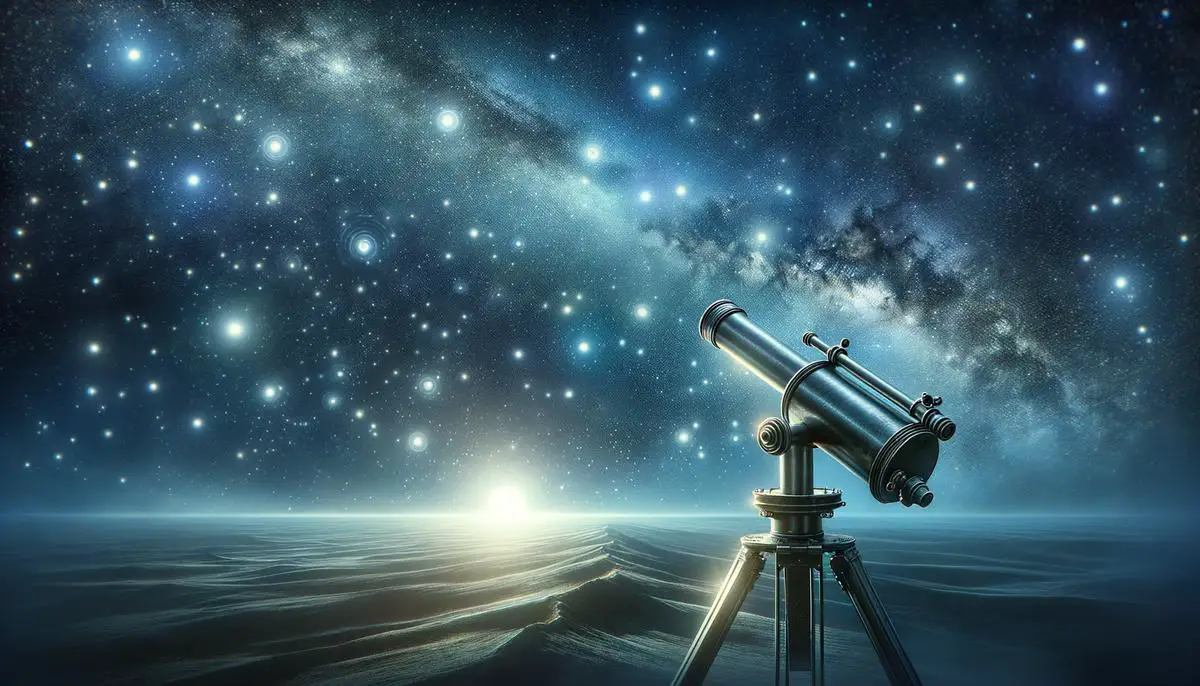
The Impact of Interstellar Messages on Human Society
Receiving interstellar messages in science fiction forces societies to grapple with the profound realization that we are not alone in the universe. This revelation can act as a double-edged sword, offering unparalleled opportunities for advancement while simultaneously posing threats to established societal norms and values. In 'The Day the Earth Stood Still,' the arrival of an extraterrestrial being and its message of peace or destruction contingent on humanity's ability to live harmoniously showcases the potential for external intervention to catalyze societal change, compelling humanity to confront its warlike tendencies head-on.
Stories within the Star Trek universe, such as the iconic episode "The Inner Light" and the film "Star Trek: First Contact," delve into the complexities that follow the receipt of messages from other civilizations. These narratives often paint a picture of unity, demonstrating how shared goals and existential threats can meld disparate factions together. Yet, they do not shy away from the internal conflicts that arise, questioning the readiness of humanity to partake in a greater cosmic community. The diverse reactions among humans, from fear and skepticism to wonder and eagerness, mirror our multifaceted nature, revealing our capacity for both divisiveness and cooperation under unprecedented circumstances.
Central to many of these stories is the challenge to humanity's ethical, religious, and scientific paradigms. Interstellar messages inevitably bring to light the limitations of current human understanding and belief systems. They provoke a philosophical awakening, prompting humans to reassess their place in the cosmos. This introspection can lead to a reassessment of what it means to be human, prompting shifts in societal values towards more universal ideals of empathy, unity, and environmental stewardship.
These stories also caution against naïveté. 'The Day the Earth Stood Still' and various Star Trek narratives underscore the importance of cautious optimism. They highlight the risks of blindly trusting or undermining the intentions behind interstellar messages and emphasize the need for critical thought and robust dialogue in decoding and responding to them. These actions ensure that humanity does not lose sight of its values or compromise its autonomy in the face of advanced extraterrestrial civilizations.
The prospect of interstellar communication raises the question of humanity's legacy. Narratives frequently cast this cosmic connection as a chance for humans to transcend their mortal and planetary bounds, ensuring that human achievements, knowledge, and essence endure beyond Earth's confines. This immortality through interstellar dialogue offers a bittersweet solace—an assurance that, even in the face of potential extinction or cosmic insignificance, the human experience will resonate throughout the void.
Science fiction narratives underline that the impact of receiving interstellar messages is as much about the internal reflections they spur as about the external connections they forge. They serve as mirrors, reflecting our current societal imperfections and potential for growth. Through unity and introspection catalyzed by these cosmic communiqués, humanity is depicted as on the cusp of a new era—an era where our shared identity is not confined by terrestrial borders but is instead galactic in scope.
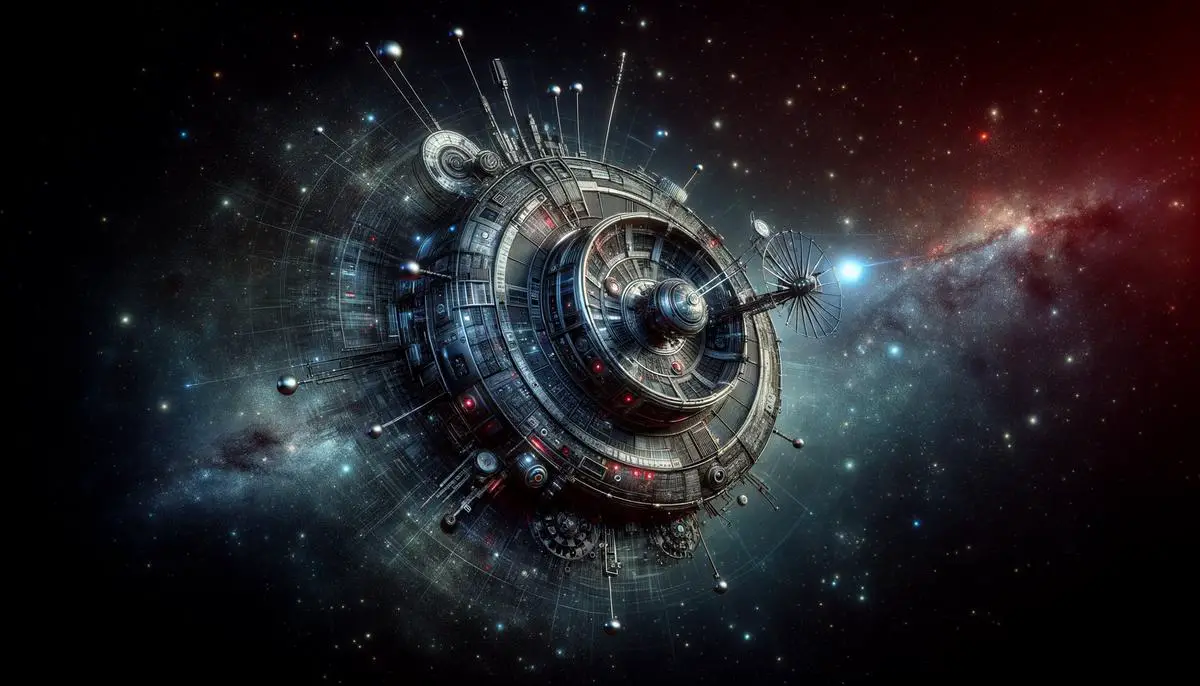
Technological and Conceptual Tools for Interstellar Communication
In the realm of sci-fi, authors have toyed with the concept of using advanced radio telescopes, not just for passive listening but as direct lines of dialogue across the stars. These mammoth constructs, envisioned to dwarf our current installations, could catch the whisper of alien broadcasts or send our own messages etched in the sky. Imagine sending vast data streams through the cosmos, hoping someone on the far side of a star cluster tunes in.
Quantum entanglement takes communication to an almost magical level. This principle suggests that two particles can be linked in such a way that the state of one (no matter the distance from the other) can instantaneously influence its twin2. Fiction often stretches this to suggest a form of communication that defies the cosmic speed limit – the speed of light. Thus, messages wouldn't need years to travel interstellar voids but could leap across spacetime in the blink of an eye.
Artificial intelligence also plays a critical role in sci-fi narratives about interstellar communication. Beyond mere tools, these AI entities could serve as intermediaries, translating alien concepts and languages unfathomable to human minds. They might even be the ones to first crack the code of incoming messages, parsing out meanings from the cosmic background noise.
Nanoswarm messages present an equally intriguing concept. Instead of traditional signals, imagine dispatching a swarm of nanobots programmed to find alien civilizations and then reconstruct themselves into a device to deliver our messages directly. Or better yet, these nanobots could create a receiver for us to catch whispers from distant worlds, a hyper-advanced version of SETI's radio telescopes.
Fiction often explores the idea of beacon stations — relics left by ancient civilizations that act as lighthouses in the cosmic ocean. Constructed around strategic points in the galaxy, such as near stable wormholes or resource-rich star systems, they'd serve dual purposes:
- They could guide spacefarers from any civilization, providing safe passages through treacherous or uncharted cosmic lanes.
- They'd serve as message repositories. Civilizations could leave their "galactic footprint" here, a time capsule with information about their species, culture, and stories, hoping other space explorers stumble upon it.
All these concepts, while grounded in our current understanding and aspirations, stretch into the bounds of speculative fiction. Yet, they underline a critical aspect of human nature embedded within science fiction — our relentless drive to reach out, connect, and understand our place in the cosmos. Through these imagined tools and methods, stories about interstellar communication continue to reflect our hopes, dreams, and the endless possibilities that await among the stars.
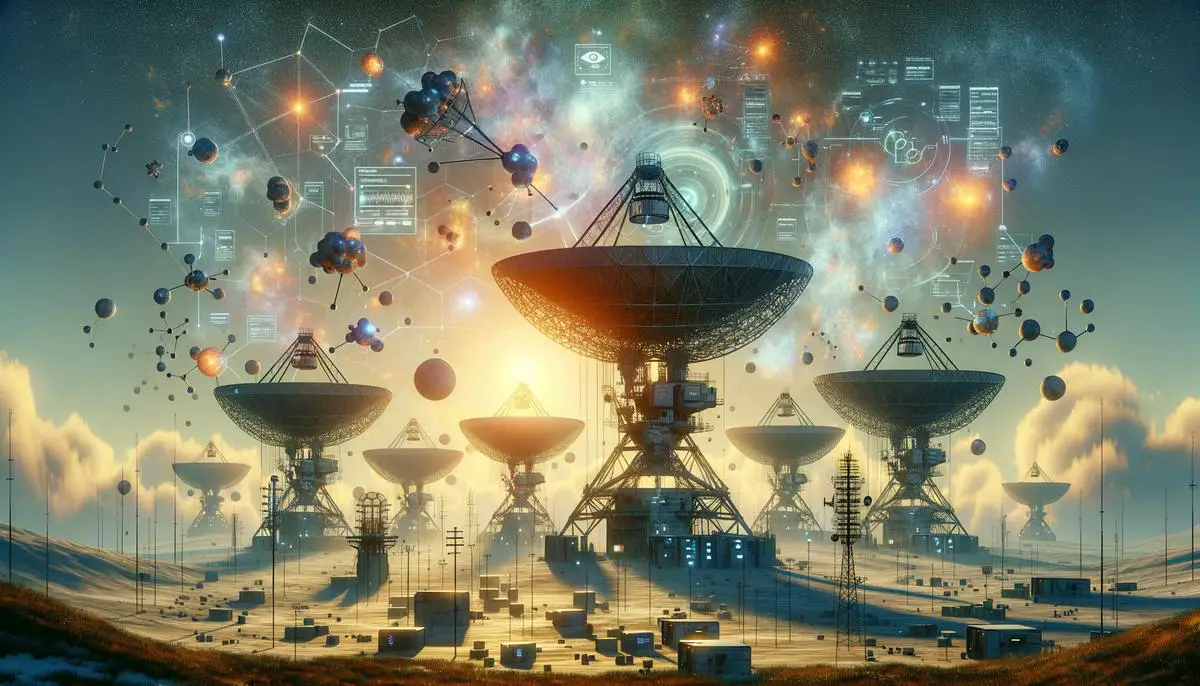
Ethical Considerations of Sending Messages into the Cosmos
Pushing messages through the vast emptiness of space opens up gateways not just between stars but between moral conundrums. When penning a letter to the unknown, do we also write ourselves into a corner of unexpected consequences and ethical predicaments? Imagine a scenario pulled from the depths of imaginative literature where our message, a digital bottle cast into the cosmic ocean, finds its way to a civilization far superior to our own, triggering a series of events that were never foreseen.
Sending messages into space isn't just about broadcasting our existence—it's akin to sending an invitation, one that might be accepted in ways we've never dreamt. What if this otherworldly civilization views us not as equals, but as curiosities at best, or resources at worst? The act transforms from one of outreach to vulnerability.
Leaders in science fiction have explored how the revelations from such contacts might shatter our societal norms, causing upheavals as the newfound knowledge or technology drastically shifts our societal balance. Could unveiling the existence of extraterrestrial intelligence lead to societal collapse, as old belief systems crumble under the weight of undeniable proof of alien life?
There's the pressing concern of consent. Who decides for the entire human race that we're ready to be part of a galactic conversation? This question raises concerns about representation and autonomy on a planetary scale, highlighting power disparities within our own species. Could a single entity or coalition making this decision for all mark an unparalleled imposition on global autonomy?
Consider the dangers of misinterpretation. Signals meant as a friendly 'hello' could be misconstrued as declarations of war or invitations for exploitation, based on cultural misinterpretations. Science fiction muses on the catastrophic mishandling of interstellar dialogue, serving as a sober reminder that communication is an art fraught with misunderstandings even among human interactions.
Imagine further the scenario where we receive a blueprint for a technology far beyond our understanding, presented as a gift. The ethical considerations bloom like night-blooming cacti—beautiful but with thorns. Should we use it, knowing it could advance humanity exponentially, or fear it as a Trojan Horse, laden with risks we can't possibly anticipate?
Ethics in sending messages to the cosmos encompass more than just the act; they ripple back to us, holding up a mirror to our existential fears and ethical shortcomings. It draws boundaries around our responsibilities not just to ourselves but to any conscious entity that might gaze up at the same sea of stars.
In conceptualizing these deep space communications, science fiction allows us to wrestle with these ethical scenarios in the labyrinth of our imagination before we ever face them in reality. It highlights a universal truth about the power of communication to build bridges or burn them and the profound responsibility that comes with extending a hand, or signal, out into the vast unknown.
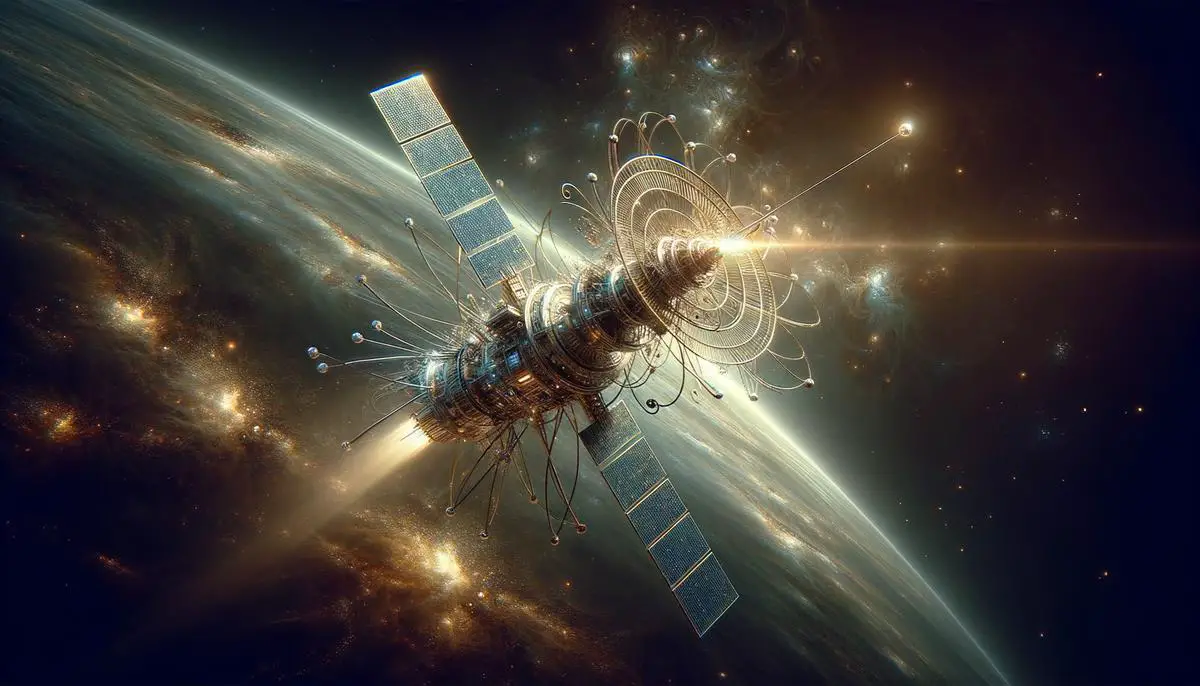
The contemplation of interstellar communication and monoliths in science fiction does more than fuel our imagination about the cosmos; it holds up a mirror to our own nature. The single most important point that resonates throughout these narratives is the enduring human yearning for connection and understanding, a theme that transcends the boundaries of space and time. It's a reminder that, in our quest to reach out to the cosmos, we are also reaching into the depths of our own identity, seeking to understand not just the universe, but ourselves within it.
- Sagan C, Drake F, Lomberg J, et al. Murmurs of Earth: The Voyager Interstellar Record. New York: Random House; 1978.
- Horodecki R, Horodecki P, Horodecki M, Horodecki K. Quantum entanglement. Rev Mod Phys. 2009;81(2):865-942.
![]()
